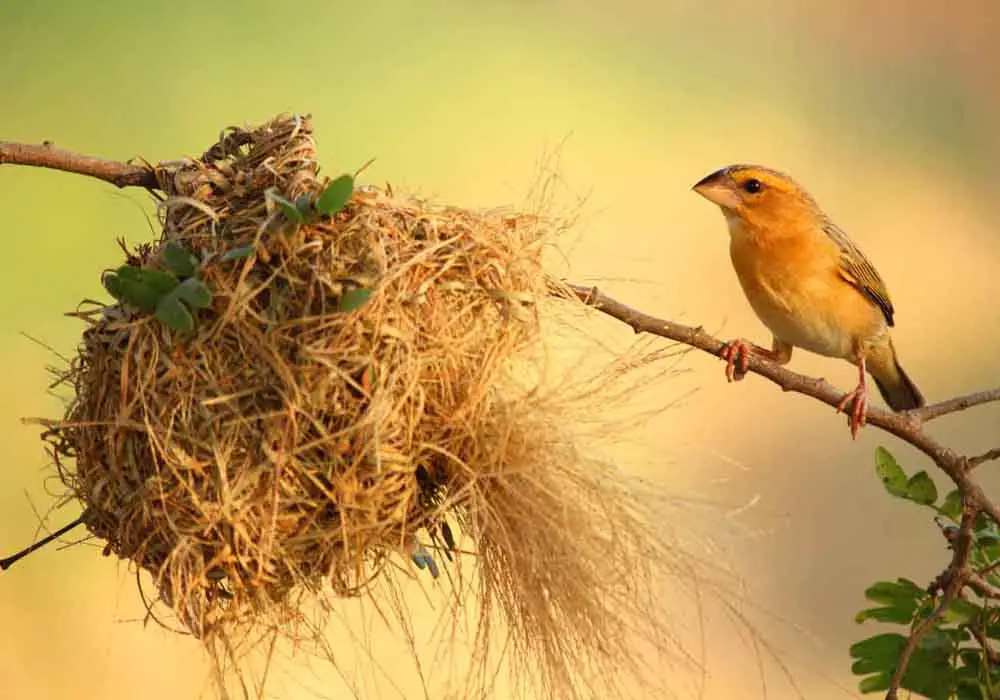When Do Birds Lay Eggs?
What Are The Things That Also Determine When?
It’s no secret that birds make amazing parents. From building nests to incubating their eggs and caring for their nestlings, birds commit their all to taking care of their little ones. But although known for their commitment to their eggs, so exactly when do birds lay eggs?
Birds lay eggs all year long; however, the vast majority wait until spring to lay their eggs. Three factors dictate when birds lay their eggs; fitness, day length, and latitude. A staggering 86 percent of birds lay their eggs in April, May, and June, with May being the peak month.
If you’re looking to learn more about birds and their egg-laying behavior, you couldn’t be in a better place. Read on as we delve deeper into the world of our feathered friends and their egg-laying process.

The Egg Laying Process
Birds lay the least amount of eggs in October, but all of the winter months generally yield low results. when do birds lay eggs?
Early nesters that build their homes before May include the American robin, barn owls, and Eastern screech owls. Late Nesters like house wrens, barn swallows, and common yellowthroats wait until after winter to lay their eggs.
The process isn't as simple as finding a partner, sitting in a nest, and hoping for the best. Birds need to plan. They must pick a suitable place to have their babies, pick their partner, build their nest and incubate. It's a long and demanding road from deciding it's time to mate to motherhood.
Let’s take a look at the egg-laying process, shall we?
Picking the Location
Birds mark time through the amount of daylight. As days grow longer, a bird's system switches into breeding mode. The avians undergo physiological shifts, setting them in high mating gear.
Non-migratory birds spend the entire year scoping out territory, while migratory wingers establish their area as soon as they return from winter break.
A good nesting location is essential to the survival of the brood. Birds need territory abundant in food and protection. Parents choose their breeding spot well before nesting and immediately protect it from rivals.
Picking a Mate
Females select males based on a variety of attributes. Male birds need to attract mates by proving their fitness as a father. Female birds want strong, capable partners whose genetics will make hearty babies.
Males demonstrate their fitness by:
- Displaying colorful breeding plumage
- Bringing their ladies dinner
- Showing they can build a quality nest
- Singing, drumming, or calling
While many partners remain monogamous throughout mating, feathered infidelities occur. Nestlings from the same mother can have different fathers.

Do (or can) birds lay eggs without a male? Read more about this interesting topic on our Can Birds Lay Eggs Without A Male article here.
Building the Nest
A sturdy, safe nest is essential to breeding. Before birds lay eggs, parents need a secure location, one that’s safe from both predators and the elements.
Different bird species build different types of nests. We tend to associate nests with trees, but the little nurseries can be located in all sorts of locations. Birds build nests in cliff-sides, burrows, and on houses and windowsills.
Here are some common types of nests.
Durable Nests
Some birds, especially eagles, build sturdy nests that can be used for multiple years. Bald eagles make the biggest nests that average 5-6 feet in diameter and 2-4 feet in height. The birds need up to three months for construction and add to the nest annually.
Flexible Nests
Hummingbirds, the tiniest birds, make the tiniest nets. They build their nests from elastic materials like plants and spiderwebs on the tops of tree branches.
These tiny birds often lay their eggs before the nest is completed and continue to build up the residence throughout incubation.
Their stretchability sets hummingbird nests apart and makes them unique (and pretty cool).
Hummingbird eggs start very small, the size of black beans, and take up the entire nest. But as the eggs (and eventually hatchlings) grow, the nest stretches to accommodate them in a cozy, secure, and snug setting.
Check out this interesting YouTube video on the
ingenious ways birds make their nests...
Pendant Nests
Orioles build these fascinating hanging nests.
The hodge-podge homes hang from trees' outermost branches, camouflaged by leaves and foliage in the mating season but very visible in the winter.
Orioles make their nests from any material available but line the interior with soft, warm materials to protect their eggs and hatchlings.
Scrape Nests
These are very uncommon as birds that lay these eggs don't build much of a nest at all.
Beach nesting birds lay eggs that naturally camouflage with the beach setup. They dig shallow holes in the sand, lay their eggs in them, and then line the ditch nest with little bits of local debris to further disguise the eggs.
Cliffside Nests
Cliff nesters often lay very pointy eggs on one end to prevent them from rolling off the edge… and to their doom!
Although coastal birds are known to prefer nesting on ledges, ravens, falcons, and condors also build their homes on ledges. However, non-coastal birds also soften the rock cliffs with twigs and leaves.
The cliffs provide the eggs with extra protection from predators.

How often do birds lay eggs? Is it once a year, or multiple times? For more information on this, check out our interesting article.
Floating Nests
Loons, coots, grebes, and gallinules build floating nests on the water. The birds need to use materials that float because the eggs can easily sink if not adequately protected.
Mud, cattails, reeds, and other aquatic vegetation construct these nests. The birds attach the nests to naturally growing vegetation to anchor the little homes and hide them from predators.
Underground Nests
Swallows, kingfishers, puffins, and owls all nest underground. Some dig their own nests, but others use pre-existing holes. While pre-existing holes can make great underground nests, most birds prefer making their own nests after scouting for an ideal location.
Cavity Nests
Woodpeckers, chickadees, and swallows build their nests in holes in trees or set up shop in birdhouses. The process can take anywhere from a day to even weeks depending on the type of cavity a bird decides to nest on. On most occasions, the birds will hollow the surface to make it more accommodative.
Mating and Egg Laying
Now that they've built their homes, birds are ready to lay their eggs. During mating season, males' internal testes swell to 1,000 times their usual size. Female ovaries and oviducts swell as well.
Egg laying requires 24 hours. Lady birds only lay an egg a day
How many eggs a bird lays hinges on a variety of factors:
- Food availability
- Latitude
- Mother's age
- Weather
- Time of year
Females lay anywhere between two and fifteen eggs per nesting.

We have a page on this site that has available all sorts of articles on bird eggs that we think you'll find of interest. Check out our Bird Egg Information and Facts page to read all about them!
When Do Birds Lay Eggs...Final Thoughts
There is very little romance involved when birds lay eggs. The avians need to choose optimal conditions for their offspring to survive, factoring in the ability to find food and avoid predators.
Once the mating season hits, primarily in the spring, birds choose a location, a mate, and a nest. Nestlings enter the world in a safe, secure area with plenty of food and protection.
Back To The TOP Of This When
Do Birds Lay Eggs Page

About the Author...
Richard Worden, a dedicated bird lover for over 20 years, I love to share my in-depth knowledge and passion for birds. Read more About Me and my expertise in this field.
- We Know Birds HOME ›
- Bird Egg Facts and Information ›
- When Do Birds Lay Eggs?
